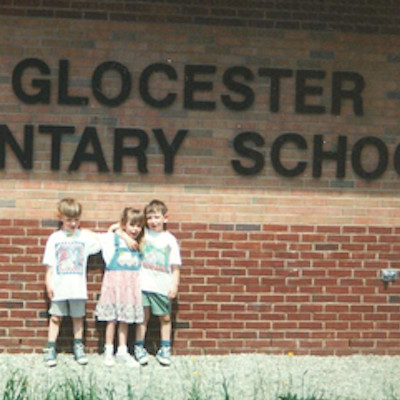Rhode Island’s Most Unemployed Cities and Towns
Tuesday, November 05, 2013
New unemployment numbers for September and October will be made available later in the month -- how will RI fare?
See Rhode Island's Most Unemployed Cities and Towns BELOW
According to Laura Hart with the Rhode Island Department of Labor and Training, "Unemployment numbers for September and October will be available at the end of November," as September's were delayed with the federal shutdown. Hart however addressed the unemployment challenges facing RI -- and the state's cities in particular.
"What we know about the urban core is that frequently, unemployment is married to educational attainment and literacy skills," said Hart. "For example, we know that in Rhode Island, the percentage of the population aged 25 or older who doesn't have a high school diploma or a GED is 15.2%.
GET THE LATEST BREAKING NEWS HERE -- SIGN UP FOR GOLOCAL FREE DAILY EBLASTHart continued, "That number is Central Falls 46%, in Pawtucket, 28%, Providence, 27%, and Woonsocket, 26%."
Addressing the issue of language barrier, Hart said, "When we talk about people who don't speak English, or speak it comfortably, it's 5.3 % in state for those 25 or older. In Providence, that number is 17% -- and in Central Falls, that number is 33%.
Hart, along with Assistant Director of Workforce Development Susan Chomka, said that the DLT was adressing the skills needed for Rhode Islanders to find employment. "Governor Chafee has made it clear that his priorities are infrastructure, education, and workforce development," saide Chomka. "We're focused on a number of tactics, including workforce readiness and soft skills," noting that the DLT is working on a work-readiness "credential opportunity", that would test skills, and allow individuals to show they've got credentialed skill sets to employers.
Chomka noted a number of initiatives for work experience, including the work immersion program funded under the Governor's Workforce Board, the "back-to-work" program that allows those on UI to gain work experience while still getting benefits, as well as apprenticeships and "bridgs.jobs" at the Rhode Island Student Loan Authority all as ways to get students, unemployed individuals, and those need skills into the workforce
"People think it's "all or nothing," for workforce development, said Hart. "We work on career pathways -- skill sets needed for entry level, then the next step, then on the job training. We really focus on multiple pathways."
Former Director of Administration Gary Sasse pointed to education -- and early education -- in particular as important in addressing unemployment gaps.
"Children must start school ready to learn which requires an investment in early childhood and parent education programs. There must be a growing emphasis on teacher assessments and school accountability . School choice must be enhanced," said Sasse.
"Finally , the funding of urban schools must be adequate and guarantee equal educational opportunity regardless of location or the wealth of the community. Given the need to compete and enhance the ability of children to meet high state standards , Rhode Islanders need to bring the education clause of the state constitution into the 21st century," said Sasse.
Perspectives on Reducing Unemployment
"Ironically, the best thing the state can do to address the employment needs of urban communities is to clean up its own house and grow more rapidly," said URI economist Led Lardaro. "That would raise the demand for labor in various urban centers directly and also permit the state to relax regulations overall, while giving more state aid to cities and towns that can allow them to target their employability."
"Overall, the state of RI must reinvent itself, making dramatic changes to the cost of doing business here, which would be beneficial to all businesses, whether existing or those thinking of locating here, whether urban or not. The cost of doing business here is NOT merely taxes, but taxes, fees, regulations, electricity costs, and most importantly the (lack of) skills of our state’s labor force," said Lardaro.
Fellow URI academic, Distinguished University Professor of Business Administration Edward Mazze, offered his thoughts on steps that Rhode Island should take to improve its unemployment -- at both the state and local levels.
"Three immediate things Rhode Island can do to improve employment opportunities in urban and suburban areas: (1) reduce the state's corporate business taxes, (2) provide incentives for companies hiring new personnel including but not limited to tax credits, placing these businesses in a higher priority for doing business with the state and providing training grants and (3) have a pro-active state-wide program to attract new businesses that take advantage of the state's strengths including the workforce.
Both Senate President Teresa Paiva-Weed, and Speaker of the House Gordon Fox pointed to efforts made during recent General Assembly session as focusing on improving the employment rate in the state.
"The package of legislation, known as “Moving the Needle,” overhauled Rhode Island’s overall approach to economic development, including through reformation of the Economic Development Corporation and requiring a long-term vision to guide economic development efforts. The re-authorized historic tax credits are one example of legislation put forward as part of this package," said Greg Pare, Spokesman for Paiva-Weed. "Historic tax credits help to put people in the hard hit construction industry back to work, while also having a positive impact on urban and other neighborhoods. Other aspects of the package of bills addressed regulatory reform, all tax incentives, and the rising cost of health care and energy. Laws were passed to invest in workforce development and infrastructure, and to improve education."
Larry Berman, Spokesman for Speaker Fox, acknowledged, “Unemployment has been a major concern, and that is why several legislative initiatives were enacted this year geared towards improving the economy and reducing unemployment.
"Economic success begins by creating momentum, and that was what was accomplished this year with bills such as “Back to Work RI” initiative. This recognizes that times of unemployment can be used to increase skills and provide opportunities to place individuals within companies. It creates a program in which a person collecting unemployment benefits is paired with a business for training at no expense to the business. Thus, at the close of the program, the person collecting unemployment has new training to make him or her more marketable to the current company or to other potential employers," said Berman.
“The Assembly also enacted an initiative that allows manufacturing companies and career and technical schools to offer 16 and 17 year old high school students the opportunity to participate in pre-apprenticeships in manufacturing settings. Manufacturing floors are much different and safer than they were years ago. With this legislation, real opportunities are created for students to receive career-relevant training."
New Approaches Needed?
"The most important thing that RI can do to reduce unemployment and improve the economy all over the state is to become economically competitive with our neighboring states and remove the dynamic where businesses run away from Rhode Island, as opposed to running to us," said gubernatorial candidate Ken Block. "To make this happen, Rhode Island government needs to become more efficient and find savings, use that savings to make smart tax and policy changes that improve our competitive posture and then effectively sell our new story to businesses outside of our borders."
Mike Stenhouse with the Center for Freedom and Prosperity pointed as well as needing to address the economy to combat unemployment.
"Our state's stagnant economy is causing pain for all Rhode Islanders. As dismal as the unemployment situation looks in the urban corridor, according the Federal Reserve, Rhode Island is the only state that has lost middle-wage jobs the last few years, and, coincidentally, it’s also seen a decline in high-wage jobs," said Stenhouse. "To boost the economy, game-changing reforms are required, like a Zero.Zero sales tax. We have to move away from the practice of targeting benefits towards specific groups of people, businesses, or industries, and instead be bold enough to seek to improve the business climate for the entire Ocean State as the number one priority.
Urban analyst Aaron Renn said that of any recent jobs add, "There hasn't been high and medium wage job creation, it's been at the lower-end of the spectrum," and pointed to study New Geography that ranked Providence 315 out of 398 for job growth. "It's a complex, multi-faceted issue," said Renn.
Related Slideshow: Rhode Island’s Most Unemployed Cities and Towns
Below are the unemployment rates for Rhode Island's 39 cities and towns from August 2013.
The statewide average for the month was 9.1% -- the third highest rate in the country.
Related Articles
- Unemployment Above 25% for Rhode Island Youth
- Report: RI Unemployment to Remain Above 9% Until at Least 2014
- NEW: RI Unemployment Numbers Dropped to 8.8 Percent in April
- NEW: Rhode Island’s Unemployment Rate Drops Again
- NEW: RI Unemployment Rate Drops To 9.4%
- NEW: Rhode Island Unemployment Remained at 8.9 Percent for June
- NEW: Unemployment Drops to 10.4 Percent
- NEW: Reed, Whitehouse Seek to Preserve Unemployment Insurance
- NEW: Rhode Island’s Unemployment Rate Drops to 46-Month Low
- NEW: Unemployment Remains at 10.4%
- NEW: Rhode Island Unemployment Climbed to 9.1 Percent for August
- DLT Director: RI’s Unemployment Rate Won’t “Turn Around Overnight”
- Rhode Island Owes Feds $200 Million for Unemployment Benefits
- NEW: Unemployment rate falls to 10.2 percent
- NEW: Rhode Island Unemployment Rate Up For May 2013
- Major Unemployment Assistance Underway for those Affected by Hurricane Sandy
- State Report: 38 Studios Debacle, Unemployment Dips & Pot Dispensaries
- RI 1 of 5 States that Didn’t Improve Unemployment Rate in November
- NEW: Chafee Announces Disaster Unemployment Assistance Sessions
- State Report: Chafee’s Budget, Unemployment Rate & Gay Marriage Vote
- RI State Report: EDC Nominees, Unemployment & An E-Cigarette Ban
- NEW: RI DLT Reports Lowest Unemployment Rate Since 2008
- State Report: RI’s Disastrous Unemployment Rate, Gun Safety & PC Ponies Up
- RI State Report: Unemployment, Gay Marriage & Fox’s Economic Plan














